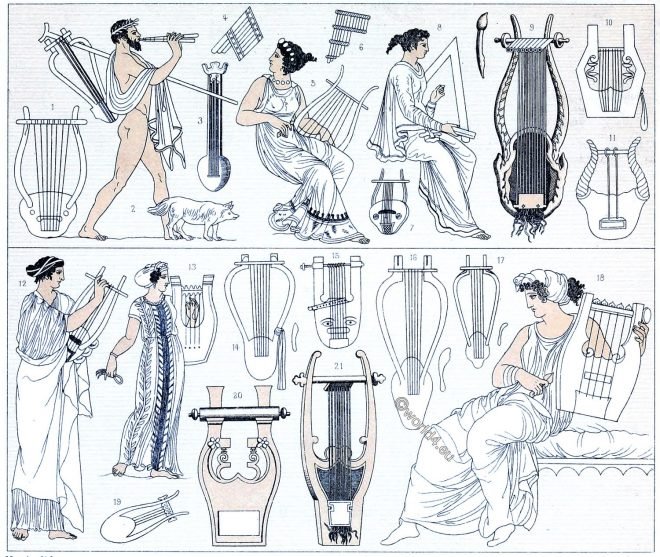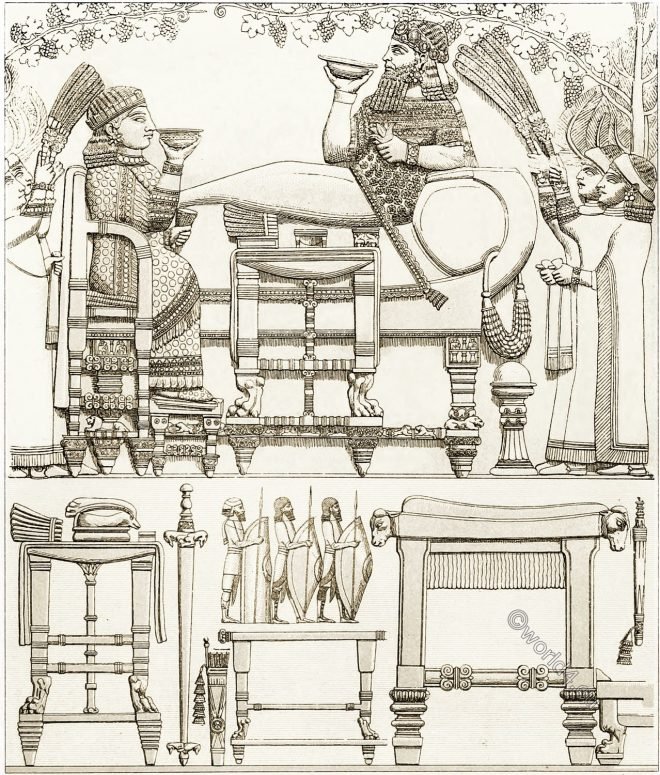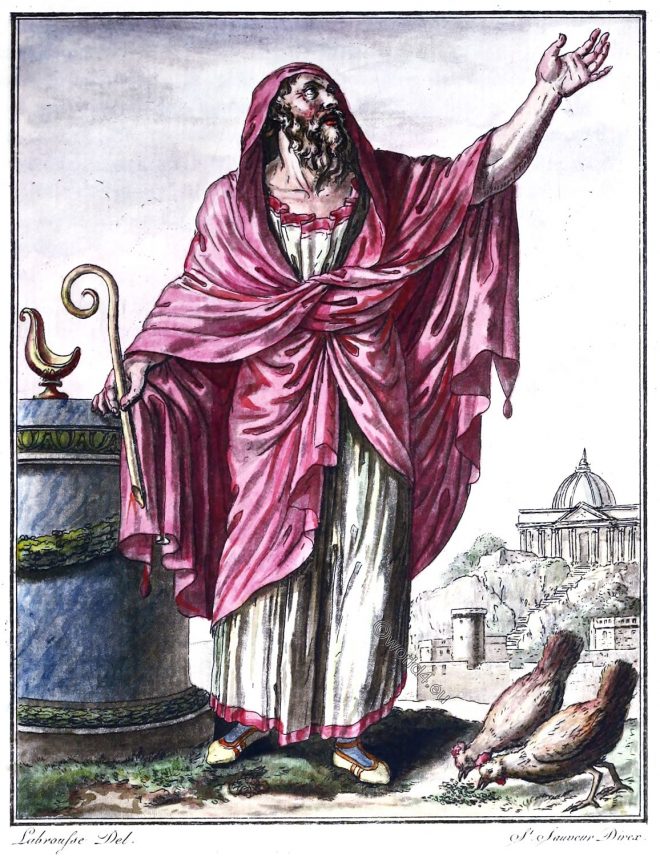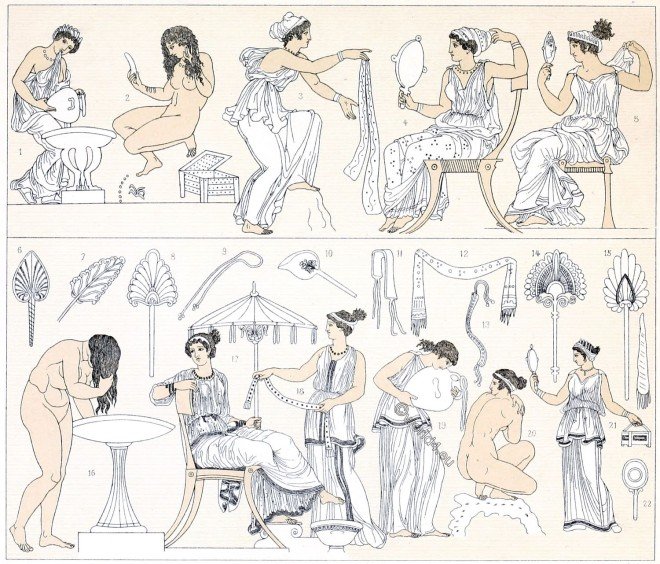History of ancient Greek musical instruments. The syrinx or pan flute, the harp, lyras and flutes. The lyre and the flute were the most popular musical instruments of the Greeks.
Category: Ancient
Antiquity. Greek women’s costumes. Endymata and epiblemata.
Greece. Women’s costumes. The main piece of clothing was the chiton, in Roman times the tunica, a long, folded piece of textile that was wrapped around the body
Assyrian-Babylonian culture. Costumes, weapons, furniture.
Assyrian-Babylonian culture of the ancient world. Furniture, architecture, rulers, soldiers, weapons, slaves, customs.
Greece. Warriors of heroic and historical time. Leaders and Soldiers.
The armament of the heroic period. The Greek army. The Hoplit, the Peltast, The Rider, the Phalangit, the Archer, the victorious Warrior, the Great Goddesses of war and hunting, Athena and Artemis. The Purpure. Bourgeois costume at the time of Ptolemy.
Hairstyles and headgear in ancient Greece. Historical Greek fashion.
GREECE. ANTIQUE HAIR AND HEADGEAR. The women of Greek antiquity knew how to achieve a great variety in the arrangement of their hair. Veils of light or precious fabric, ribbons of various colours, flowers and fragrant ointments were often used in artistic hairstyles.
An Augur. Roman official priesthood.
Roman Auguries. They have existed since the foundation of Rome and exercise a practice derived from the Greeks and Etruscans, the Etruscans disciplina.
The Women’s toilet of ancient Greece. Cosmetics, beauty products.
The Women’s toilet. Ancient Greek cosmetics, beauty products, hair care, mirrors and jewelry boxes. The fragrances, the dyeing of hair.
The Chlamys, the Petasos, the Himation, the Chiton. Helmets.
Greece. Various garments and helmets. The Chlamys, the travel and war coat, the Petasos, the broad-brimmed Thessalian hat, the coat Himation.
Garments of the ancient Greek women. Different types of chiton
The dressing process for women. Different types of chiton and how they were worn. Make-up and hair/body care.
Greece. Women after the figures from Tanagra and Asia Minor.
The small terracotta figures from Tanagra almost without exception represent noble women who corresponded to the ideal of beauty and the fashion of that time.










